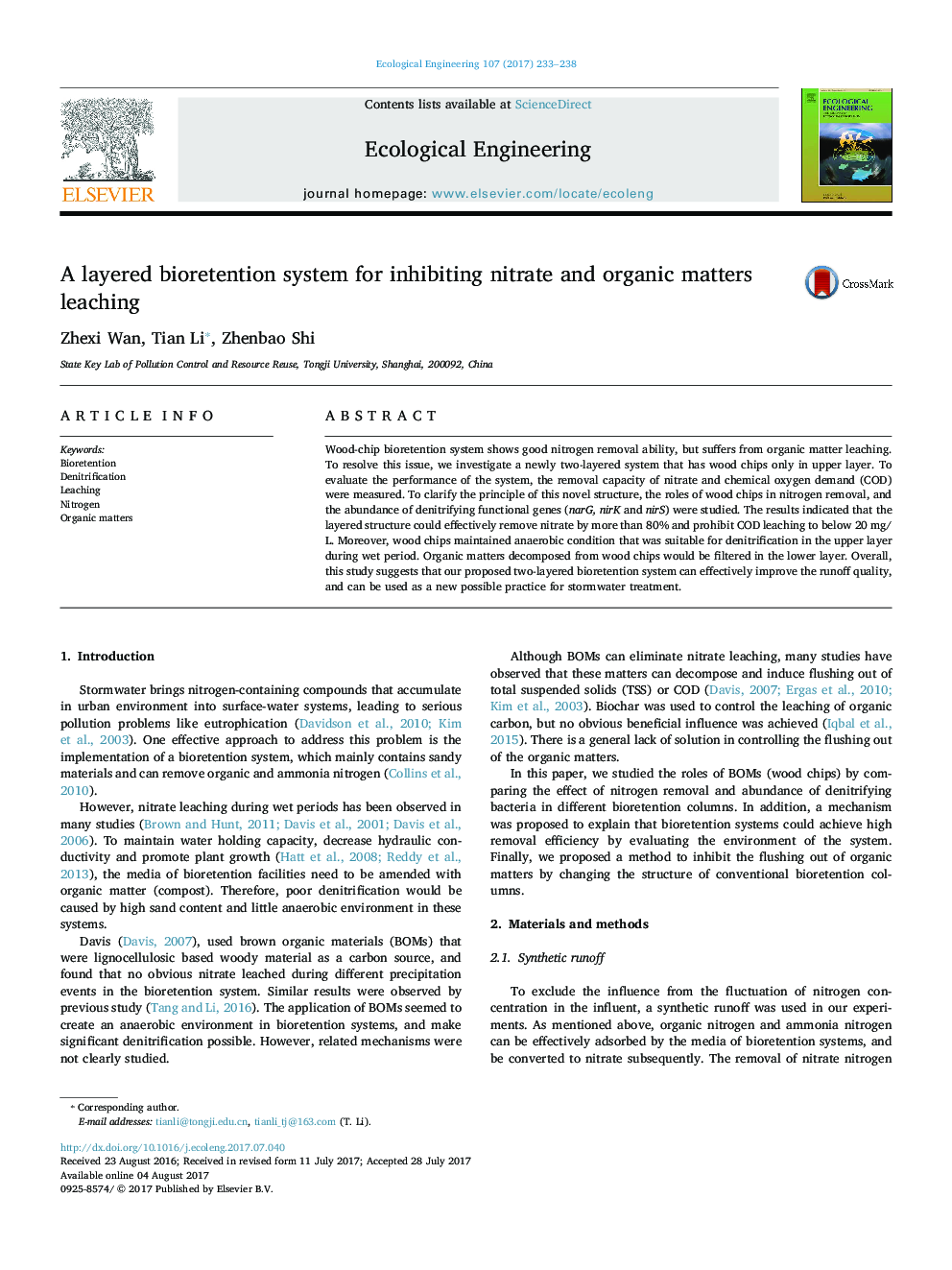| کد مقاله | کد نشریه | سال انتشار | مقاله انگلیسی | نسخه تمام متن |
|---|---|---|---|---|
| 5743679 | 1617995 | 2017 | 6 صفحه PDF | دانلود رایگان |
- Wood chips makes the environment of the media anaerobic during wet period.
- Denitrification can occur in the upper layer due to the roles of wood chips.
- COD leaching is inhibited by the filtration of no wood-chip media.
- Nitrate removal mainly occurs during wet period.
Wood-chip bioretention system shows good nitrogen removal ability, but suffers from organic matter leaching. To resolve this issue, we investigate a newly two-layered system that has wood chips only in upper layer. To evaluate the performance of the system, the removal capacity of nitrate and chemical oxygen demand (COD) were measured. To clarify the principle of this novel structure, the roles of wood chips in nitrogen removal, and the abundance of denitrifying functional genes (narG, nirK and nirS) were studied. The results indicated that the layered structure could effectively remove nitrate by more than 80% and prohibit COD leaching to below 20Â mg/L. Moreover, wood chips maintained anaerobic condition that was suitable for denitrification in the upper layer during wet period. Organic matters decomposed from wood chips would be filtered in the lower layer. Overall, this study suggests that our proposed two-layered bioretention system can effectively improve the runoff quality, and can be used as a new possible practice for stormwater treatment.
Journal: Ecological Engineering - Volume 107, October 2017, Pages 233-238
